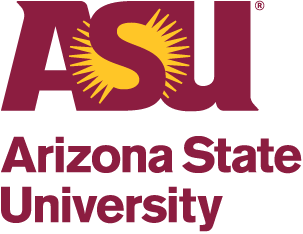Technology (Alternative Energy Technologies), MSTech
Energy, Fuel, Generation, Hydrogen, Photovoltaics, Solar, alternative, cells, energies, storage
ASU is no longer accepting new students to this program. Please explore Degree Search for other similar program options.
The MSTech program with a concentration in alternative energy technologies provides students with graduate-level expertise in alternative energy technologies that provide energy resources in the global economy. The program is flexible and permits students to develop a program of study, with faculty approval, to meet their individual career goals.
The program provides a hands-on research experience in the alternative energy technologies field. Topics for master's degree theses and applied projects include: the use of energy sources such as solar, wind, ocean, geothermal and biomass; the solar-hydrogen cycle, a renewable energy scenario that relies on production of hydrogen from solar energy; and energy conversion and distribution in a "smart electrical grid." The required research provides students with an opportunity to develop special research and application skills directly related to individual needs and objectives in the field of alternative energy technologies.
- College/school:
Ira A. Fulton Schools of Engineering
- STEM-OPT extension eligible: No
THESIS OPTION
Concentration (15-16 credit hours)
Supporting Area (8-9 credit hours)
Research Methods (3 credit hours)
EST 500 Research/Writing (2)
EST 591 Seminar (1)
Culminating Experience (6 credit hours)
EST 599 Thesis (6)
At least nine credit hours of 500-level coursework must be included in the technical concentration. Students may take up to six credit hours of 400-level coursework to broaden their technical knowledge within the concentration or supporting area. Students are required to complete six hours of EST 599 Thesis, write a thesis and make an oral defense. All coursework applied toward the minimum 33 credit hour total must be at the 400 and 500 levels.
NONTHESIS OPTION
Concentration (15-18 credit hours)
Supporting Area (9-12 credit hours)
Research Methods (3 credit hours)
EST 500 Research/Writing (2)
EST 591 Seminar (1)
Culminating Experience (3 credit hours)
EST 593 Applied Project (3)
At least nine credit hours of 500-level coursework must be included in the technical concentration. A maximum of three credit hours of EST 593 Applied Project may be applied toward the 20 credit hour, 500-level minimum. Additional background deficiency hours may be required. All coursework outside engineering programs must be preapproved by the department chair.
A final oral defense of the applied project is required. A copy of the applied project report or thesis must be submitted before the candidate is eligible for this examination.
PLAN OF STUDY
Coursework: The student selects a concentration and supporting area, as well as a subset of courses from each area. Specifically, five or six courses are selected from the concentration area and three or four are selected from the supporting area. Early in the program, the student identifies an advisor for the major who is a faculty member of the department interested in the selected area of concentration. The student works with the advisor and committee to develop the program of study and, subsequently, to carry out the research component of the program.
Research: Each student is required to complete an applied project or thesis within the student's area of emphasis as a part of the degree program. The applied project includes a written report.
Research Activity: Research activities in engineering programs include systems, circuit applications and digital design. Master of Science in Technology candidates will find a broad range of research that can lead to an applied project or thesis.
General university admission requirements:
All students are required to meet general
university admission requirements.
U.S. applicants | International applicants | English proficiency
Applicants must fulfill requirements of both the Graduate College and the Ira A. Fulton Schools of Engineering.
Applicants must submit all the items below to complete an application file. Incomplete files will not be reviewed or considered until complete.
- graduate admission application and application fee
- official transcript from each college or university attended
- official GRE general exam scores
- statement of purpose
- current resume
- (optional) three letters of recommendation
- proof of English proficiency
Additional Application Information
An applicant whose native language is not English (regardless of current residency) must provide proof of English proficiency.
International applicants can find complete information on the English proficiency exams and other required documents on the Graduate Admission Services website: https://admission.asu.edu/international/graduate/english-proficiency
Note: A bachelor's degree that includes a minimum of 30 credit hours or equivalent in a technology area including coursework applicable to the concentration being sought and a minimum of 16 credit hours of mathematics and science is required.
Undergraduate deficiency courses must be completed within the first year of the graduate program while concurrently enrolled in graduate-level coursework.
Applicants should see the program website for application deadlines.
Engineering Programs
|
WANER 204
polygrad@asu.edu
480-727-1874
3 year programs
These programs allow students to fast-track their studies after admission and earn a bachelor's degree in three years or fewer while participating in the same high-quality educational experience of a 4-year option. Students should talk to their academic advisor to get started.
Accelerated master's
These programs allow students to accelerate their studies to earn a bachelor's plus a master's degree in as few as five years (for some programs).
Each program has requirements students must meet to be eligible for consideration. Acceptance to the graduate program requires a separate application. Students typically receive approval to pursue the accelerated master’s during the junior year of their bachelor's degree program. Interested students can learn about eligibility requirements and how to apply.


